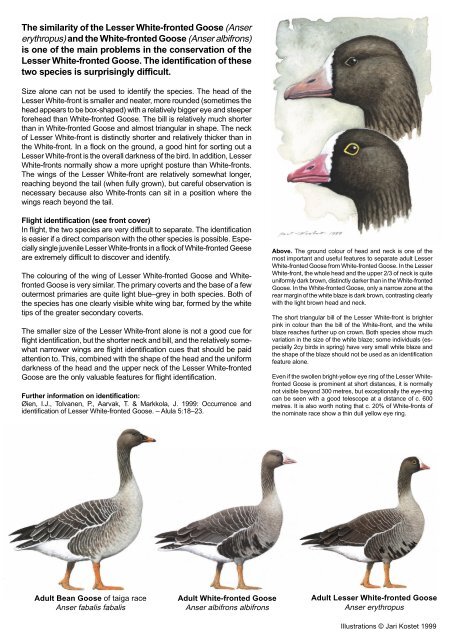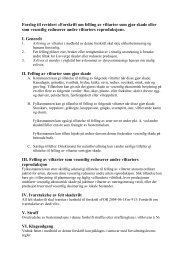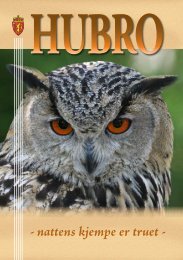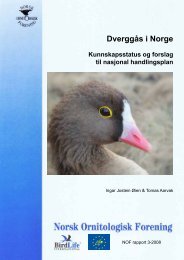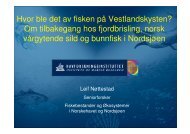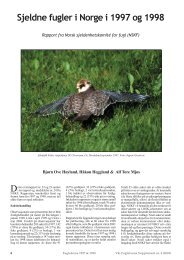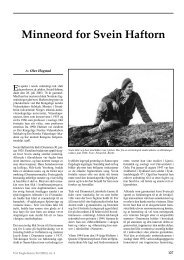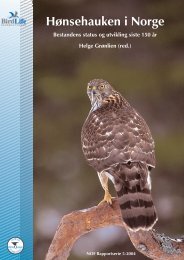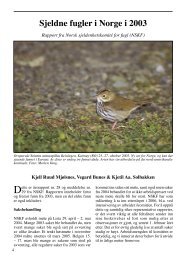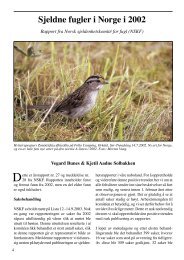Fennoscandian Lesser White-fronted Goose conservation project ...
Fennoscandian Lesser White-fronted Goose conservation project ...
Fennoscandian Lesser White-fronted Goose conservation project ...
Create successful ePaper yourself
Turn your PDF publications into a flip-book with our unique Google optimized e-Paper software.
The similarity of the <strong>Lesser</strong> <strong>White</strong>-<strong>fronted</strong> <strong>Goose</strong> (Anser<br />
erythropus) and the <strong>White</strong>-<strong>fronted</strong> <strong>Goose</strong> (Anser albifrons)<br />
is one of the main problems in the <strong>conservation</strong> of the<br />
<strong>Lesser</strong> <strong>White</strong>-<strong>fronted</strong> <strong>Goose</strong>. The identification of these<br />
two species is surprisingly difficult.<br />
Size alone can not be used to identify the species. The head of the<br />
<strong>Lesser</strong> <strong>White</strong>-front is smaller and neater, more rounded (sometimes the<br />
head appears to be box-shaped) with a relatively bigger eye and steeper<br />
forehead than <strong>White</strong>-<strong>fronted</strong> <strong>Goose</strong>. The bill is relatively much shorter<br />
than in <strong>White</strong>-<strong>fronted</strong> <strong>Goose</strong> and almost triangular in shape. The neck<br />
of <strong>Lesser</strong> <strong>White</strong>-front is distinctly shorter and relatively thicker than in<br />
the <strong>White</strong>-front. In a flock on the ground, a good hint for sorting out a<br />
<strong>Lesser</strong> <strong>White</strong>-front is the overall darkness of the bird. In addition, <strong>Lesser</strong><br />
<strong>White</strong>-fronts normally show a more upright posture than <strong>White</strong>-fronts.<br />
The wings of the <strong>Lesser</strong> <strong>White</strong>-front are relatively somewhat longer,<br />
reaching beyond the tail (when fully grown), but careful observation is<br />
necessary because also <strong>White</strong>-fronts can sit in a position where the<br />
wings reach beyond the tail.<br />
Flight identification (see front cover)<br />
In flight, the two species are very difficult to separate. The identification<br />
is easier if a direct comparison with the other species is possible. Especially<br />
single juvenile <strong>Lesser</strong> <strong>White</strong>-fronts in a flock of <strong>White</strong>-<strong>fronted</strong> Geese<br />
are extremely difficult to discover and identify.<br />
The colouring of the wing of <strong>Lesser</strong> <strong>White</strong>-<strong>fronted</strong> <strong>Goose</strong> and <strong>White</strong><strong>fronted</strong><br />
<strong>Goose</strong> is very similar. The primary coverts and the base of a few<br />
outermost primaries are quite light blue–grey in both species. Both of<br />
the species has one clearly visible white wing bar, formed by the white<br />
tips of the greater secondary coverts.<br />
The smaller size of the <strong>Lesser</strong> <strong>White</strong>-front alone is not a good cue for<br />
flight identification, but the shorter neck and bill, and the relatively somewhat<br />
narrower wings are flight identification cues that should be paid<br />
attention to. This, combined with the shape of the head and the uniform<br />
darkness of the head and the upper neck of the <strong>Lesser</strong> <strong>White</strong>-<strong>fronted</strong><br />
<strong>Goose</strong> are the only valuable features for flight identification.<br />
Further information on identification:<br />
Øien, I.J., Tolvanen, P., Aarvak, T. & Markkola, J. 1999: Occurrence and<br />
identification of <strong>Lesser</strong> <strong>White</strong>-<strong>fronted</strong> <strong>Goose</strong>. – Alula 5:18–23.<br />
Adult Bean <strong>Goose</strong> of taiga race<br />
Anser fabalis fabalis<br />
Adult <strong>White</strong>-<strong>fronted</strong> <strong>Goose</strong><br />
Anser albifrons albifrons<br />
Above. The ground colour of head and neck is one of the<br />
most important and useful features to separate adult <strong>Lesser</strong><br />
<strong>White</strong>-<strong>fronted</strong> <strong>Goose</strong> from <strong>White</strong>-<strong>fronted</strong> <strong>Goose</strong>. In the <strong>Lesser</strong><br />
<strong>White</strong>-front, the whole head and the upper 2/3 of neck is quite<br />
uniformly dark brown, distinctly darker than in the <strong>White</strong>-<strong>fronted</strong><br />
<strong>Goose</strong>. In the <strong>White</strong>-<strong>fronted</strong> <strong>Goose</strong>, only a narrow zone at the<br />
rear margin of the white blaze is dark brown, contrasting clearly<br />
with the light brown head and neck.<br />
The short triangular bill of the <strong>Lesser</strong> <strong>White</strong>-front is brighter<br />
pink in colour than the bill of the <strong>White</strong>-front, and the white<br />
blaze reaches further up on crown. Both species show much<br />
variation in the size of the white blaze; some individuals (especially<br />
2cy birds in spring) have very small white blaze and<br />
the shape of the blaze should not be used as an identification<br />
feature alone.<br />
Even if the swollen bright-yellow eye ring of the <strong>Lesser</strong> <strong>White</strong><strong>fronted</strong><br />
<strong>Goose</strong> is prominent at short distances, it is normally<br />
not visible beyond 300 metres, but exceptionally the eye-ring<br />
can be seen with a good telescope at a distance of c. 600<br />
metres. It is also worth noting that c. 20% of <strong>White</strong>-fronts of<br />
the nominate race show a thin dull yellow eye ring.<br />
Adult <strong>Lesser</strong> <strong>White</strong>-<strong>fronted</strong> <strong>Goose</strong><br />
Anser erythropus<br />
Illustrations © Jari Kostet 1999


